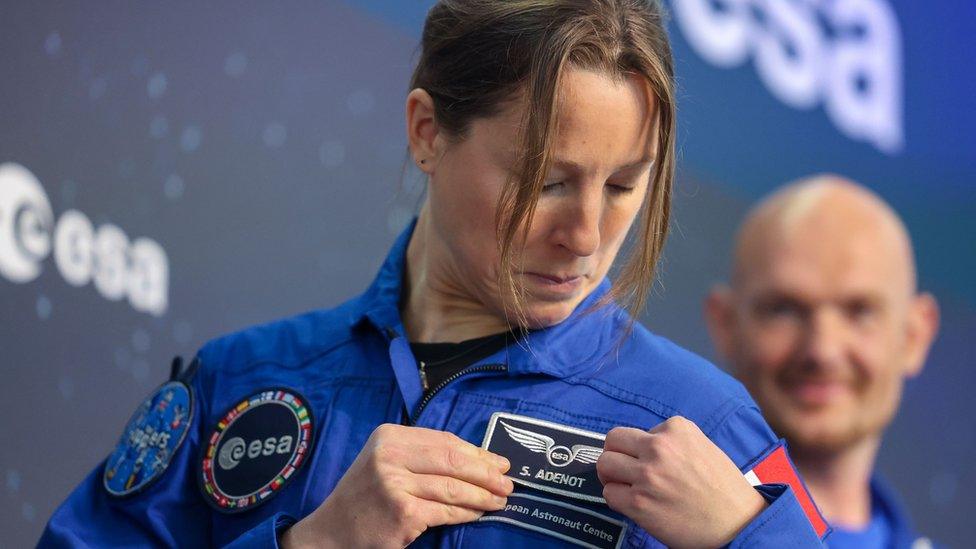Will this woman be the first Briton to walk on the Moon?
- Published
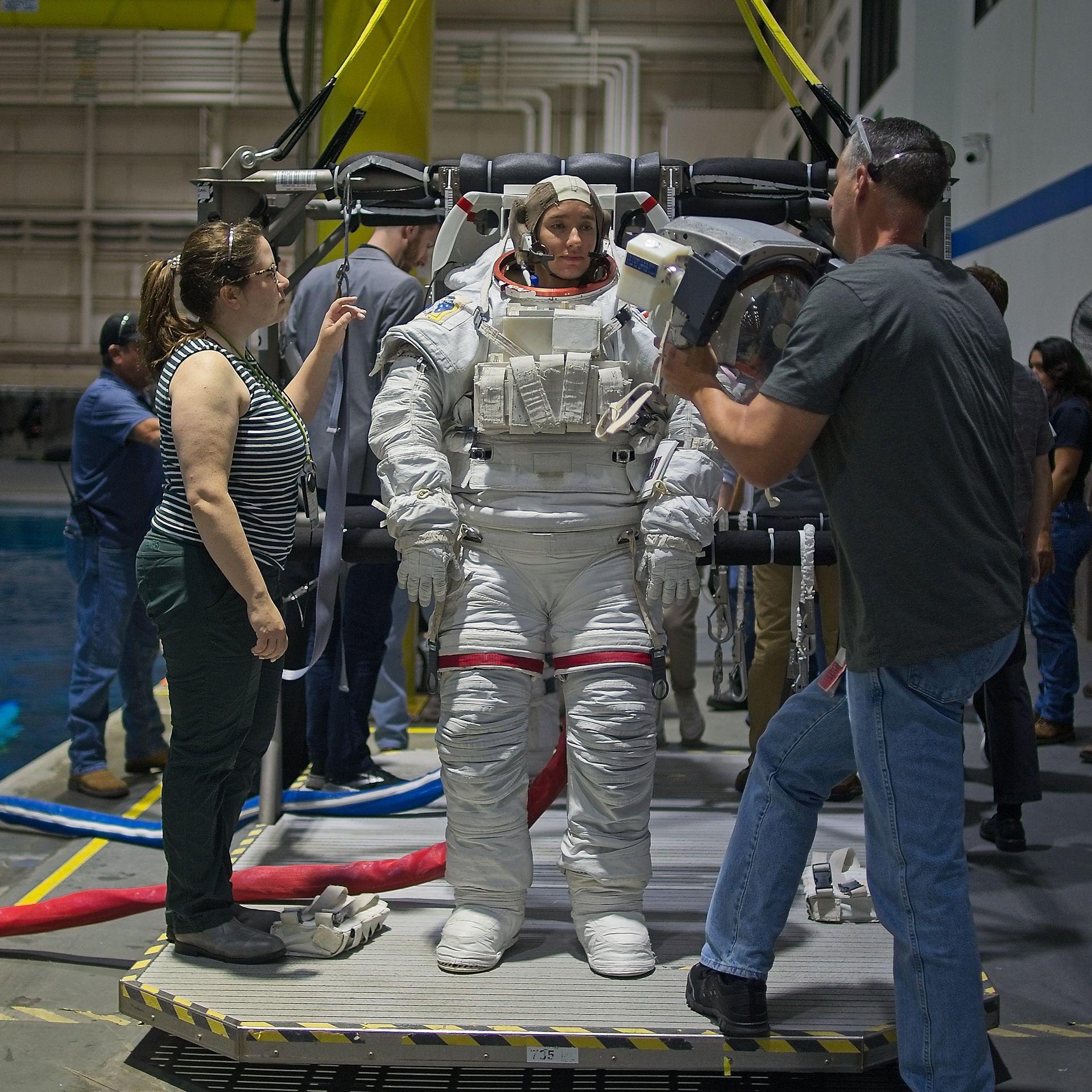
Rosemary Coogan is surrounded by a team of people pushing, pulling, squishing and squeezing her into a spacesuit.
It takes about 45 minutes to get all her gear on before a helmet is carefully lowered over her head.
The British astronaut is about to undergo her toughest challenge yet – assessing whether she is ready for a spacewalk. The test will take place in one of the largest pools in the world: Nasa's Neutral Buoyancy Laboratory at the Johnson Space Center in Houston, Texas.
The pool – which is 12m deep (40ft) – contains a life-sized replica of the International Space Station (ISS), and a "spacewalk" here is as close as it gets to mimicking weightlessness on Earth.
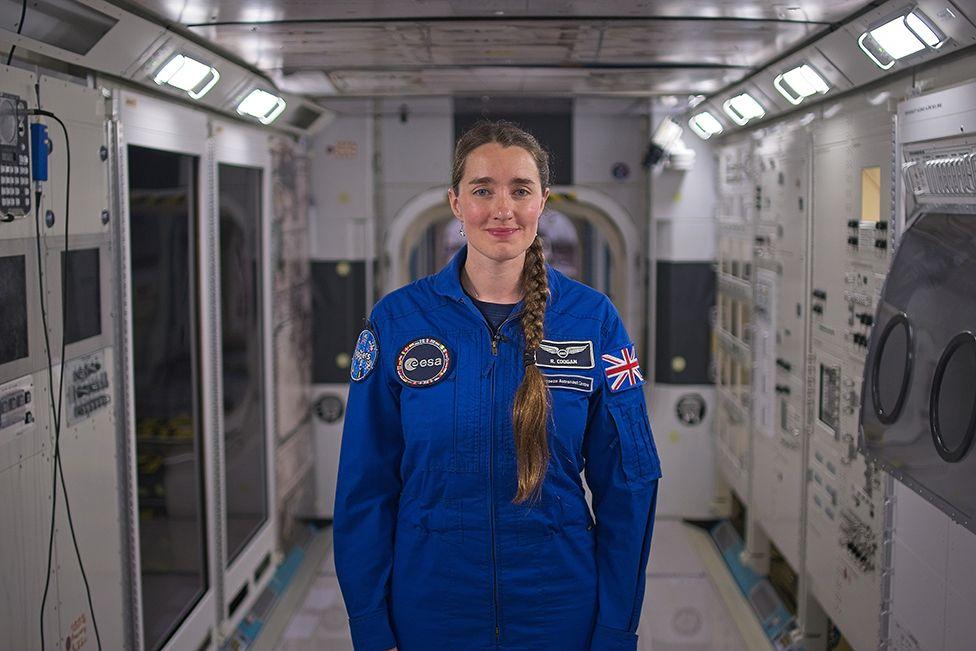
Dr Rosemary Coogan graduated as a European Space Agency astronaut in 2024
"It's a big day," Rosemary says before the dive, which is going to last more than six hours. "It's very physically intense – and it's very psychologically intense."
But Rosemary doesn't seem too fazed. She smiles and waves as the platform she's standing on is slowly lowered into the water.
Being an astronaut was Dr Rosemary Coogan's dream from a young age, she says. But it was a dream that seemed out of reach.
"At the careers day at school, you don't tend to meet astronauts," Rosemary says. "You don't get to meet people who've done it, you don't really get to hear their stories."
So she decided to study the stars instead, opting for a career in astrophysics. But when the European Space Agency (ESA) announced it was looking for new recruits to go to space, Rosemary applied and was chosen from more than 22,000 people.

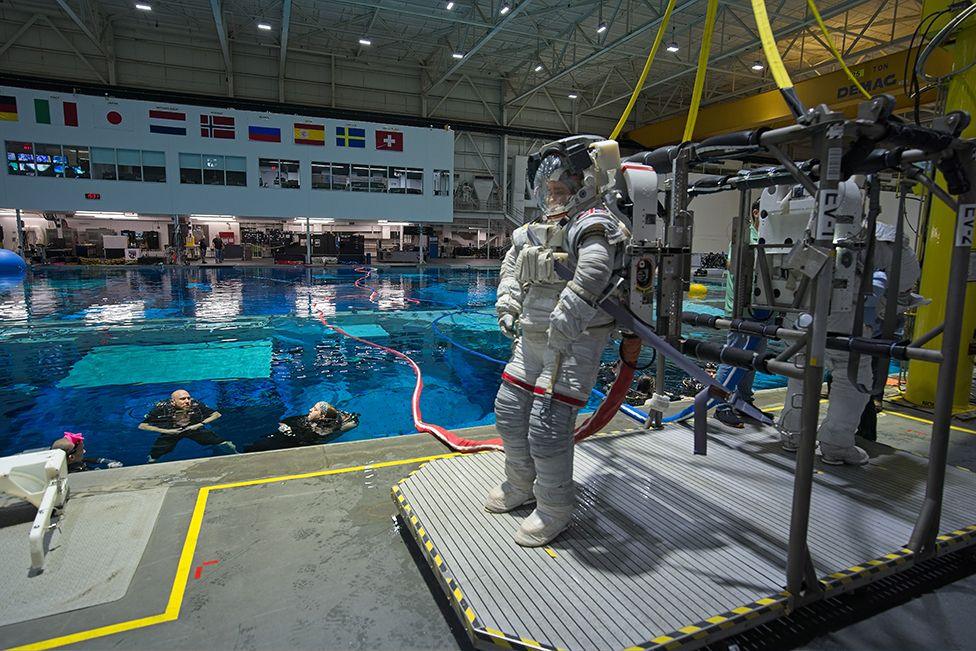
The Neutral Buoyancy Lab pool is filled with 23 million litres of water
ESA aims to get Rosemary to the International Space Station (ISS) by 2030. She'll be following in the footsteps of Britons Helen Sharman, who visited the Soviet's Mir Space Station in 1991, and Tim Peake who launched to the ISS in 2015.
Rosemary has spent the last six months training at the Johnson Space Center. As well as exploring the outside of the submerged ISS, she can head inside the orbiting lab in another life-sized mock-up located in a huge hangar.
She takes us on a tour of the lab's interconnected modules. It feels very cramped, especially considering astronauts usually spend many months on board. But Rosemary reminds us about the spectacular views.
"It is an isolated environment, but I think this helps to give that kind of connection to being outside – to alleviate that sense of claustrophobia."
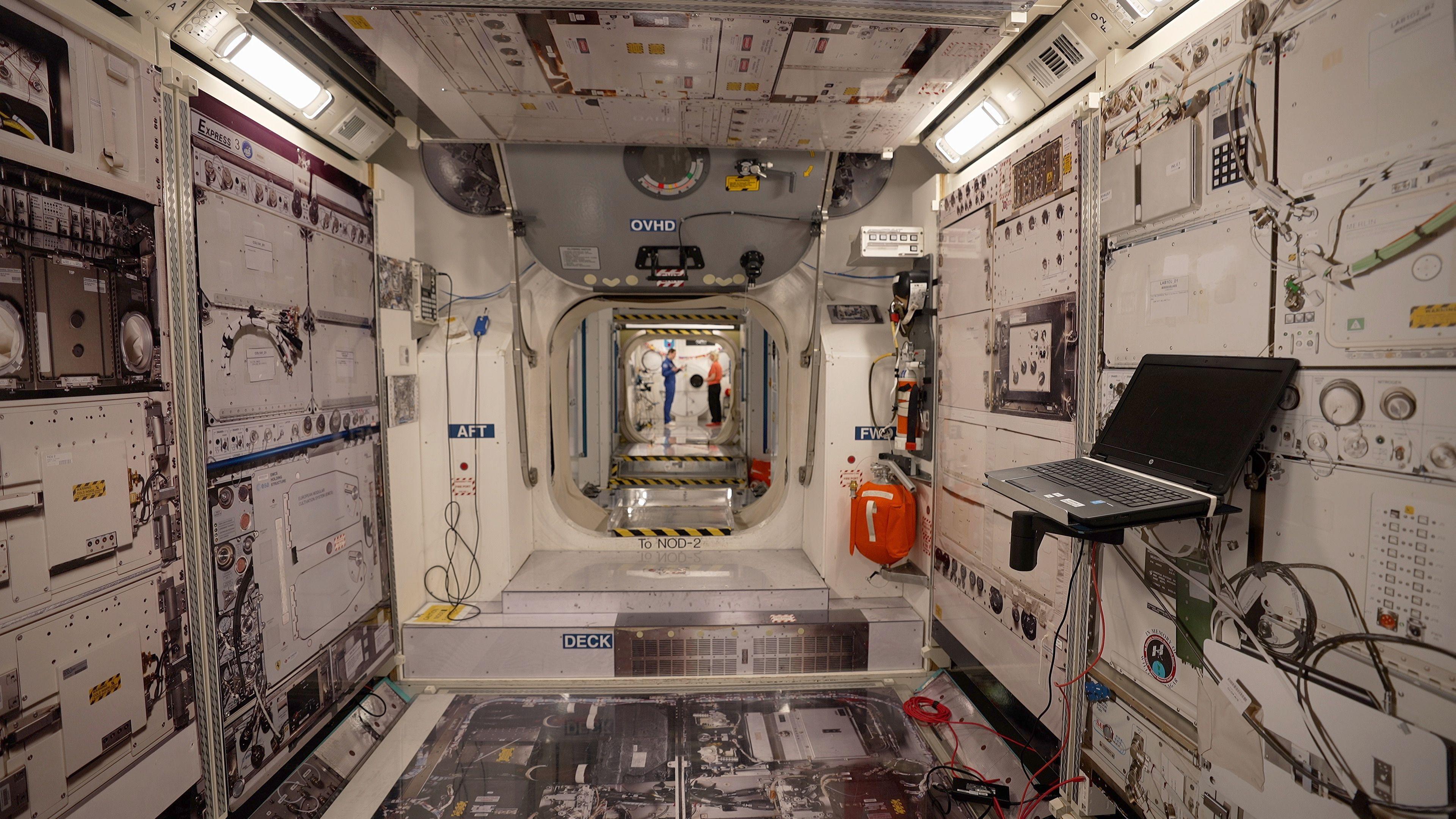
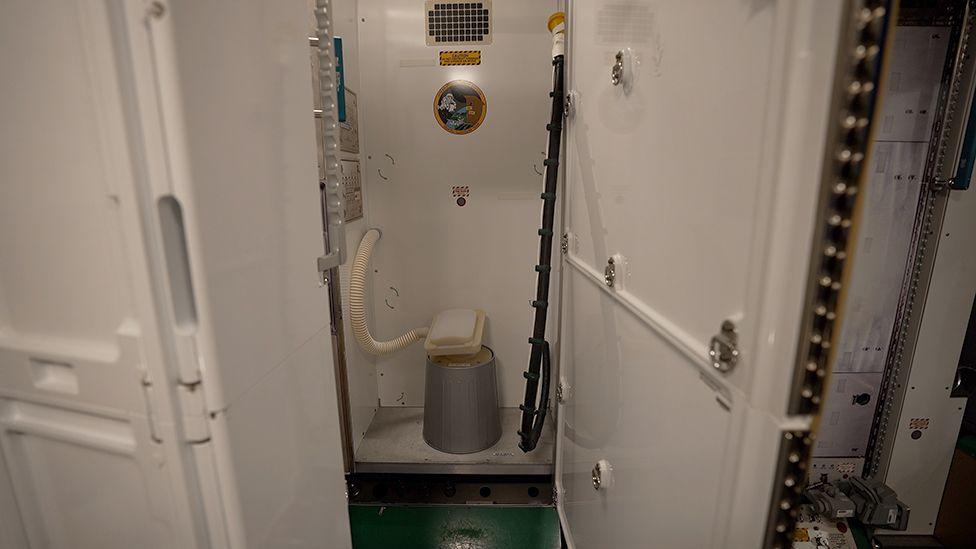
Water is a such valuable resource in space that urine is recycled into drinkable water
Rosemary's training here covers every aspect of going to space - including learning how to use the onboard toilet.
"The lower part is where you put your solid waste," she says, pointing to a loo in a small cubicle that looks like something you might find at a very old campsite. "And this funnel here is actually attached to an air suction system, and that is where you put your liquid waste."
Female astronauts have the option of suppressing their periods using drugs, Rosemary says, but can also opt not to.
"There's essentially a filter that you put on top of the cone in which you urinate and it's to stop any particles, any blood, from going into the urine system."
Urine needs to be kept separate because it's purified and treated to be re-used as drinking water, she explains.

Weightlessness is simulated by manipulating astronauts' buoyancy in the pool
Back in the pool, divers are constantly adjusting Rosemary's buoyancy in the water to make the experience as close as possible to microgravity.
She moves around painstakingly, making sure she's always attached to the submerged structure using two hooks.
Every hand-hold is carefully chosen along the bars on the outside of each module. They're in exactly the same positions as the ones on the real thing, vital muscle memory if she gets to carry out a spacewalk 200 miles (322km) above the Earth.
It's slow and difficult work, requiring plenty of upper body strength and physical effort in the hot, bulky spacesuit.
"You do a lot of mental preparation – you really think through every single movement," Rosemary explains. "You have to be really efficient with your energy. You don't want to do something and realise it wasn't quite right and have to do it again."
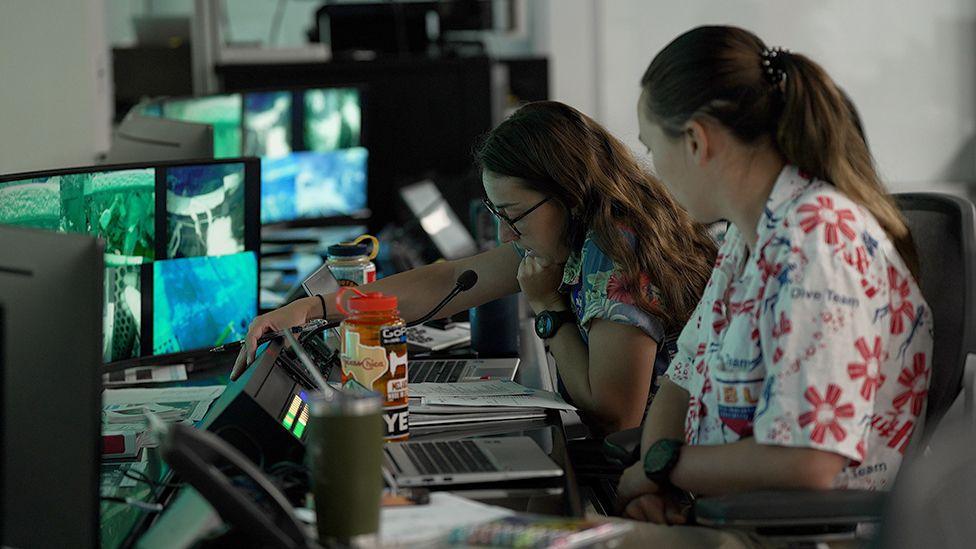
The team in the control room watch a live video feed of Rosemary to monitor everything that's happening underwater
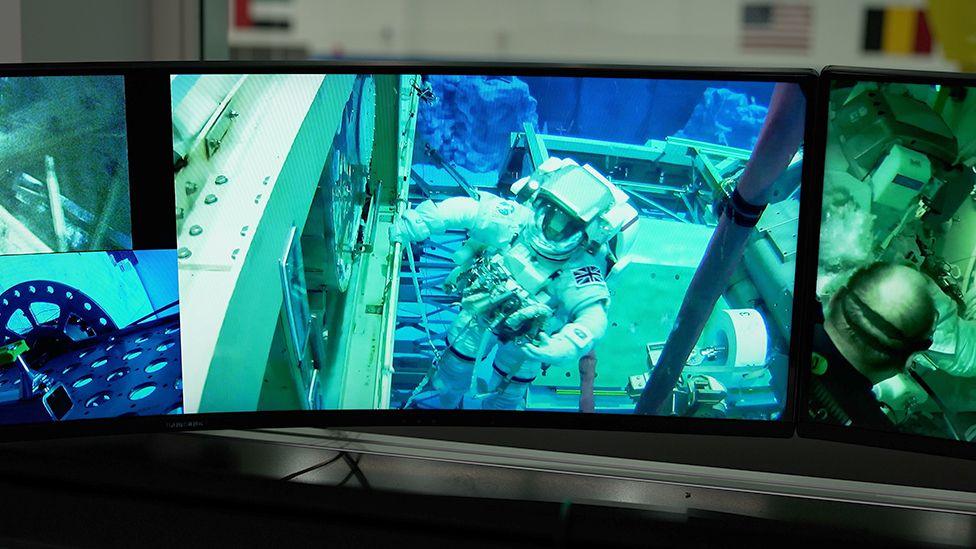
Rosemary is working alongside another astronaut to complete a list of space station repairs and maintenance for the test. Her every move is monitored by a team in a control room overlooking the pool. They're in constant communication with her as she works through her tasks.
Former space station commander Aki Hoshide, from the Japan Aerospace Exploration Agency, is on hand for advice. He has completed four spacewalks and says it's a steep learning curve for new astronauts.
"When we first start out, there's so much information thrown at you, so many skills that you have to learn and show and demonstrate," he says. "It is baby steps, but they are moving forward – and I can see their excitement every time they come here and jump in the pool."
Rosemary takes us to see a Saturn V – the rocket that took the Apollo astronauts to the Moon in 1969. More than 50 years on, Nasa is planning an imminent return to the lunar surface with its Artemis programme. European astronauts will join later missions. With an expected 35-year space career ahead, Rosemary may one day get the chance to become the first Briton to walk on the Moon.
"It's incredibly exciting that we, as humanity, are going back to the Moon, and of course, any way that I could be a part of that, I would be absolutely delighted. I think it's absolutely thrilling," she says.
After six gruelling hours underwater, Rosemary is nearing the end of her spacewalk test – but then she's thrown a curve ball.
In the control room, we hear her call out for a comms check with her astronaut partner who's working on another part of the space station. But she's met with silence.
On a video screen, we can see he's motionless. Rosemary doesn't know it, but he's been asked to pretend to lose consciousness. Rosemary's job is to reach him, check his condition – and tow him back to the airlock.
After so long under water, we can see how exhausted she is – but working slowly and steadily, she gets him safely to the airlock.
"Rosemary has the endurance of a champion. She crushed it today," says Jenna Hanson, one of Nasa's spacewalk instructors who's been assessing Rosemary. "We're really happy with where she's at – she's doing awesome."
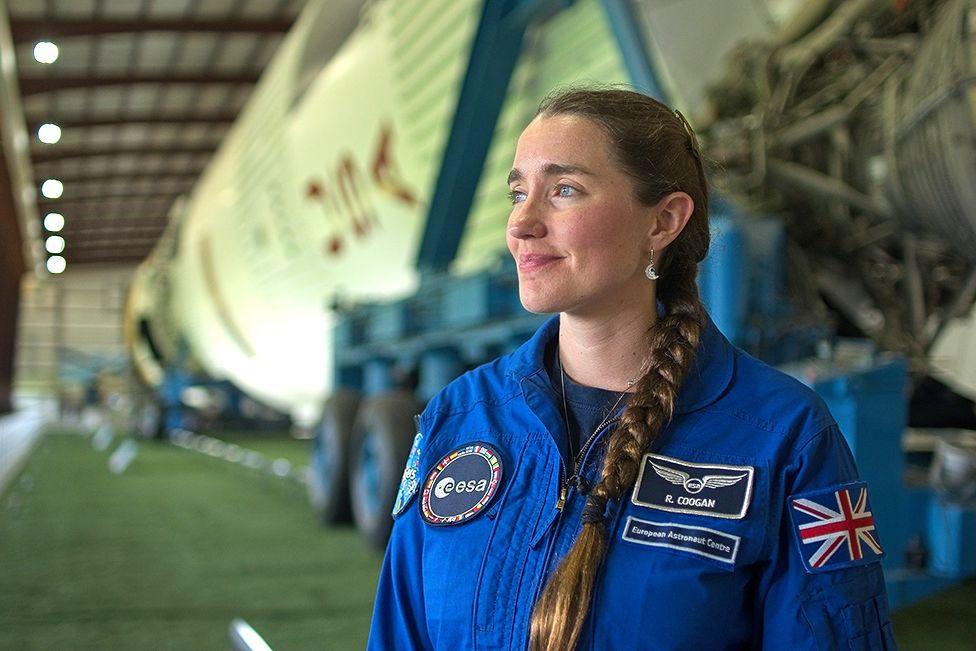
Dr Rosemary Coogan has dreamed of being an astronaut since she was a child
The spacewalk is finally over. Rosemary's platform is hoisted out of the pool and the support team help her out of her suit. As her helmet is removed, we can see she's clearly very tired, but still smiling.
"It was a challenging one, it really was, and a challenging rescue," she tells us, "But yeah, it was a really enjoyable day."
Rosemary's hard work is bringing her ever closer to her dream of getting to space.
"It's amazing," Rosemary says, "If I could do that for the real space station - where you can look out and see the stars and see the Earth at the same time - that would just be the cherry on top."
Related topics
- Published22 April 2024
